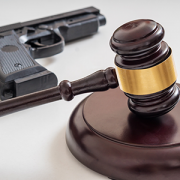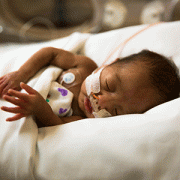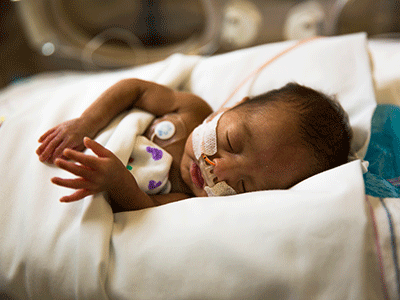AAP names Children’s National gun violence study one of the most influential articles ever published

The American Academy of Pediatrics (AAP) has named a 2019 study led by clinician-researchers at Children’s National Hospital one of the 12 most influential Pediatric Emergency Medicine articles ever published in the journal Pediatrics.
The American Academy of Pediatrics (AAP) has named a 2019 study led by clinician-researchers at Children’s National Hospital one of the 12 most influential Pediatric Emergency Medicine articles ever published in the journal Pediatrics.
The findings showed that states with stricter gun laws and laws requiring universal background checks for gun purchases had lower firearm-related pediatric mortality rates but that more investigation was needed to better understand the impact of firearm legislation on pediatric mortality.
The study, State Gun Laws and Pediatric Firearm-Related Mortality, was led by Monika Goyal, M.D., M.S.C.E., associate chief of Emergency Medicine, along with Gia M. Badolato, M.P.H., coauthor; Shilpa J. Patel, M.D., MPH, coauthor and emergency medicine specialist; and Kavita Parikh, M.D., MSHS, coauthor and hospitalist, all of Children’s National.
The big picture
In 2019, firearm injuries were the second-leading cause of death for U.S. children. Presently, they are the leading cause of death.
“We have learned that interventions to tackle gun violence are not a ‘one size fits all’ and we need to start developing and scaling tailored interventions that embrace and center community voices and partnerships,” Dr. Goyal said. “The good news is that over the last 5-7 years, there has been a groundswell of energy to address the firearm epidemic in our nation that has led to the growth of investigators, funding and advocacy efforts dedicated to developing and disseminating evidence-based interventions and policies for gun violence prevention. But we need more dedicated funding to support these efforts and continue to invest in those who wish to dedicate their careers to this work.”
About the recognition
The AAP Section on Emergency Medicine (SOEM), founded in 1981, is among the AAP’s largest sections, providing a forum for advocacy, education and research on patient care in pediatric emergency medicine (PEM). The AAP Committee on PEM (COPEM), a national committee founded in 1985, is the principal author of PEM-related AAP policies.
Members of the SOEM’s executive committee and COPEM reviewed every issue from the 75-year history of Pediatrics and selected 15 landmark papers in total, which names the study led by Dr. Goyal and her team.
What they’re saying
“This paper was the result of years of hard work and the beginning of many other collaborations as a research team. I am thankful to work with this team as we continue to add to this important area of research,” said Dr. Patel.
“I was honored to have our article chosen as one of the most influential Pediatric Emergency Medicine articles. I feel encouraged by this recognition that PEM physicians and researchers can be the bridge to the community and work together to make a difference for children,” added Badolato.
Led by their determination to change the status quo and improve the quality of life for children, the clinician-research team established Safer Through Advocacy, Firearm Education and Research (SAFER). It’s a group that works to fill the gaps in hopes of stimulating the change needed to help move the national landscape towards policies that make it safer for children and communities.
“We have created collaborations with pediatricians and researchers throughout the country and continue to work to fill the gaps,” Dr. Parikh said.
Other authors of the study include: Robert McCarter Jr., ScD, co-author; and Sabah F. Iqbal, M.D., PM Pediatrics, co-author.







